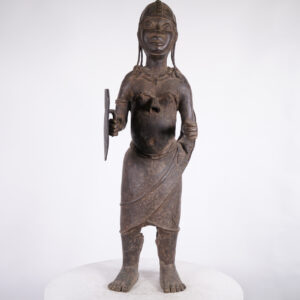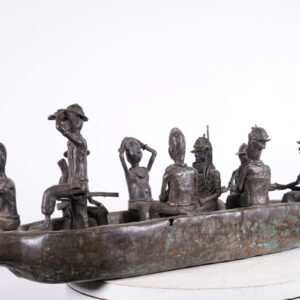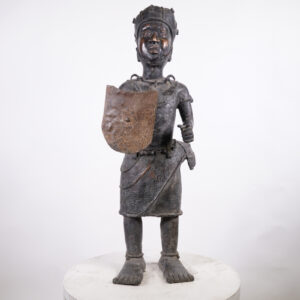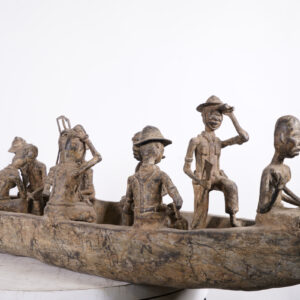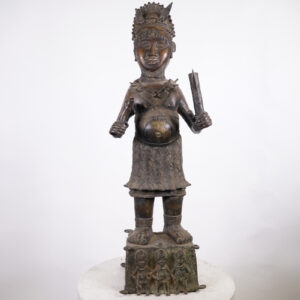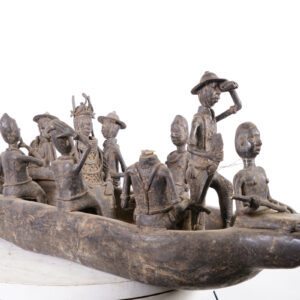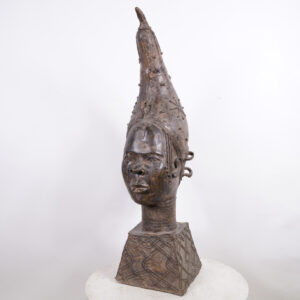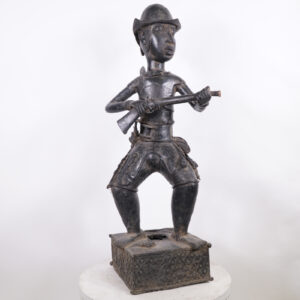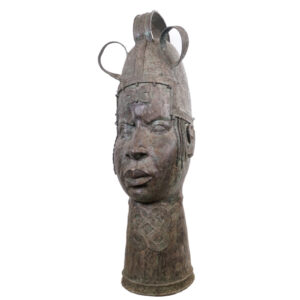Benin History
The people living in the Benin kingdom are a mixture of many cultures. Originally, the Edo people, who inhabited the area, became displeased with their ruler and invited an Ife prince to rule instead. The son of the Ife prince became the first Oba (king) of Benin, but local chiefs still had ultimate control to make decisions. In the late 13th century, Oba Ewedo would be the first king to assert his power and display absolute authority.
In the 15th century, the kingdom of Benin was expanded to a large empire under the rule of Ewuare the Great. He ordered giant walls and moats to be constructed to surround his palace. These walls, later unearthed, were estimated that it would have taken a workforce of 1000, working 7 days a week, 10-hour days, about 5 dry seasons to complete. A huge, fanatical task.
The Benin empire continued until the late 1800’s, when the British invaded, captured and burned Benin City, known as the British Expedition.
In 1897, an army of British soldiers raided Benin City in retaliation of a previous battle in which all but 2 men had perished. They burned homes, religious buildings and palaces. The city’s walls, estimated to be four times longer in total than the Great Wall of China, was left in ruins. Once the British secured the city, they began looting. Over 2500 religious artifacts and pieces of art were sent to England. They began auctioning off the artwork to cover the war expenses, some spreading to European museums while others have been lost forever.
Art
Unlike other cultures, the people of the Benin kingdom did not create tribal art, it was ordered to be made by the Oba. Using the lost-wax casting method, beautiful brass heads and plaques were littered throughout the palace as well as sculpted ivory and terracotta. Some pieces guarded the palace doors while others were placed on altars to honor ancestors where sacrifices were often made.
The leopard is repeatedly portrayed in Benin art. “The leopard of the house” is frequently used to describe the oba, signifying his mastery over the wilderness and his powerful presence.
Soldiers of the royal court were often adorned with small ivory or brass trinkets they attached to their waistband and uniform. This was to show their prestige and power in the community.
Religion
Traditional religion of the Benin is comprised of a supreme being and natural forces. They believe in the visible world and the spirit world. There are 14 cycles of reincarnations, each one beginning with an appearance before Osanobua. Human sacrifice has been part of their religious practices for centuries.
Osanobua is the creator god, although worship is more commonly focused towards other deities who are his offspring.
Olokun, who is Osanobua’s eldest son, is the ruler of global waters and the provider of wealth and fertility. Women especially pay tribute and sacrifice to him when wanting to bear children.
Ogun is the god of iron and metal.
Osun, the power that lives in plants and herbs.
Ogiuwu, the god of death.
In the 15th century, the Portuguese brought Christianity to the Benin Empire. Oba’s and their chiefs were made Catholic priests. They were encouraged to dress in the traditional getup and continue to do so to this day.
.


